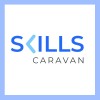Embracing Competency-Based Development Initiatives
In today’s dynamic workforce landscape, organizations are moving away from traditional training models to focus on enhancing the competencies of their employees. This innovative approach equips workers with the knowledge, skills, and practices essential for excelling in their specific roles. According to the World Economic Forum, by 2027, an estimated 50% of employees will need upskilling. Companies that implement competency frameworks often find they can retain and nurture their top talent. In this article, we’ll explore five actionable strategies that companies can adopt for competency-based workforce development to prepare their teams for the future.
Your Roadmap to Competency-Based Workforce Development
1. Establish Clear Competency Frameworks Aligned with Business Objectives
The foundation of a successful competency-based program lies in the development of a comprehensive and targeted framework. Proficiency in any role requires an amalgamation of skills, knowledge, abilities, and behaviors that are closely aligned with the organization’s mission and goals.
Start by assessing various positions within your organization, consulting leaders and HR representatives to pinpoint essential abilities for each role. For instance, customer service representatives should excel in empathy and conflict resolution, while data analysts may need a strong grasp of statistical modeling and data visualization. Define these competencies clearly, categorizing them into skill levels such as beginner, intermediate, and advanced.
The Society for Human Resource Management (SHRM) indicates that organizations with effective competency frameworks can enhance employee performance by as much as 17%. Establishing this framework allows hiring, training, and promotion decisions to be grounded in organizational needs.
2. Integrate Competency Development into the Learning Ecosystem
Once competencies are defined, it’s crucial to weave them throughout your Learning and Development (L&D) initiatives. Traditional training methods may lack relevance; competency-based workforce development solves this by linking training to the necessary skills and attributes that employees must acquire.
Ensure that learning materials—such as online courses, workshops, mentorship programs, and simulations—focus on the targeted competencies. For example, an employee seeking to enhance their “strategic thinking” could engage in courses, analyze case studies, and participate in training scenarios.
Such an approach not only fosters personalized learning but also enhances performance outcomes. LinkedIn’s 2024 Workplace Learning Report reveals that 91% of L&D professionals agree that aligning learning programs with business objectives leads to improved organizational performance.
3. Assess Skills and Identify Gaps
To effectively implement a competency-based development strategy, it’s important to evaluate employees’ current skills and identify areas for improvement. Utilizing skills assessments, behavioral interviews, 360-degree feedback, and on-the-job evaluations helps pinpoint personal strengths and competency deficiencies within teams.
A skills gap analysis compares employees’ existing capabilities with the competencies needed for their current or future roles. This process can be automated through learning platforms equipped with analytics capabilities. For instance, if a project manager lacks proficiency in “risk management,” the system can flag this gap and suggest targeted training options.
A recent McKinsey report shows that organizations employing skills-based assessments to inform training decisions experienced a remarkable 42% improvement in employee performance within a year. Continuously updating this analysis keeps workforce development strategies agile and responsive to changing business environments and technological advancements.
4. Develop Individual Development Plans (IDPs) with Measurable Outcomes
To translate insights into actionable growth, each employee should have a structured Individual Development Plan (IDP). This plan should outline the necessary competencies, provide methods for acquiring them, and establish a timeline for achieving measurable goals.
Competency-based IDPs go beyond attending generic training sessions; they focus on intentional, results-oriented development. For example, a sales executive targeting “negotiation” skills might set milestones like completing a certified negotiation course, engaging in mock negotiations, and tracking improvements in quarterly sales figures.
Managers play an essential role in coaching, providing feedback, and monitoring progress. Research from Gallup indicates that companies incorporating IDPs into their competency strategy enjoy a 30% higher retention rate of high-potential employees. Furthermore, employees with IDPs tend to feel more engaged and responsible when they see clear pathways for growth tied to crucial competencies.
5. Continuously Monitor, Evaluate, and Adapt Your Development Strategy
Competency-based workforce development requires ongoing assessment and evolution. Organizations must frequently evaluate how staff competencies contribute to productivity and overall business outcomes.
Monitoring progress in skill levels, employee engagement, and the proportion of senior staff serving as mentors is crucial. HR and L&D teams can track employee training effectiveness with data from various platforms. For instance, if only 40% of employees show progress in their communication skills, it may indicate a need for enhanced learning offerings.
Engaging employees, managers, and business leaders in providing feedback ensures that necessary updates are made to competencies, training programs, and processes. Incorporating adaptive competencies and key performance indicators (KPIs) can help employees thrive in challenging economic climates, as noted by the World Bank.
Organizations that embrace a strategy of continuous improvement can maintain the relevance and effectiveness of their competency-based workforce development efforts.
Conclusion
Adopting a competency-based approach to workforce development is an investment in employees’ skills, achievements, and innovative potential. By clearly defining key competencies, aligning them with learning resources, identifying talent gaps, creating robust development plans, and routinely assessing progress, companies can motivate their workforce to excel and thrive.
In today’s fast-evolving labor market, it’s essential for employees to understand what is expected of them and possess the skills to meet those demands. Competency-driven development offers a practical, measurable, and flexible solution to this challenge. Those who embrace this strategy now will find themselves leading the charge into the future.

Skills Caravan
Skills Caravan offers a multi-faceted Learning Experience Platform, Content Library, Engagement tools, Credentialing, and Impact reporting to automate and integrate the Learning and Development process.



